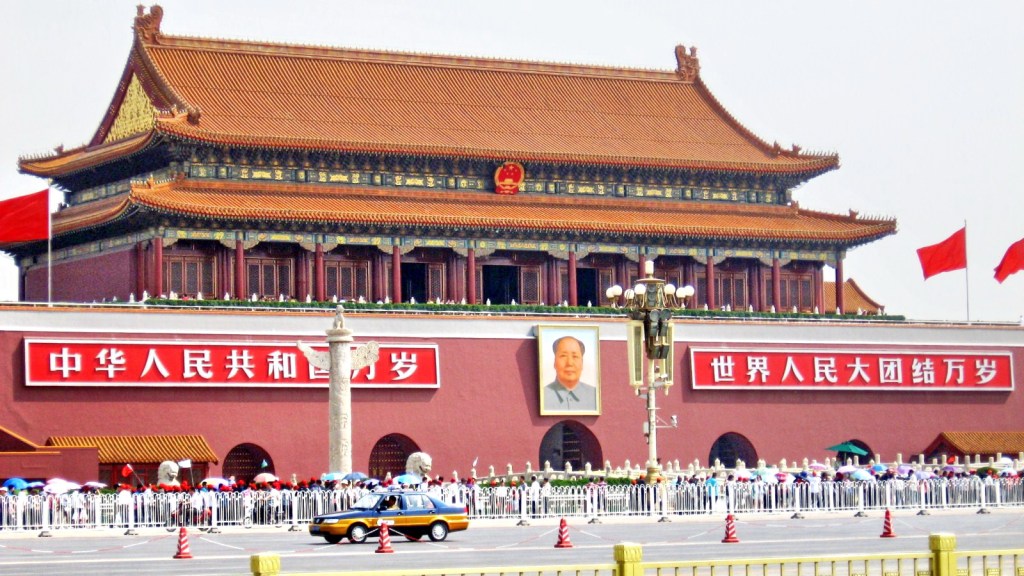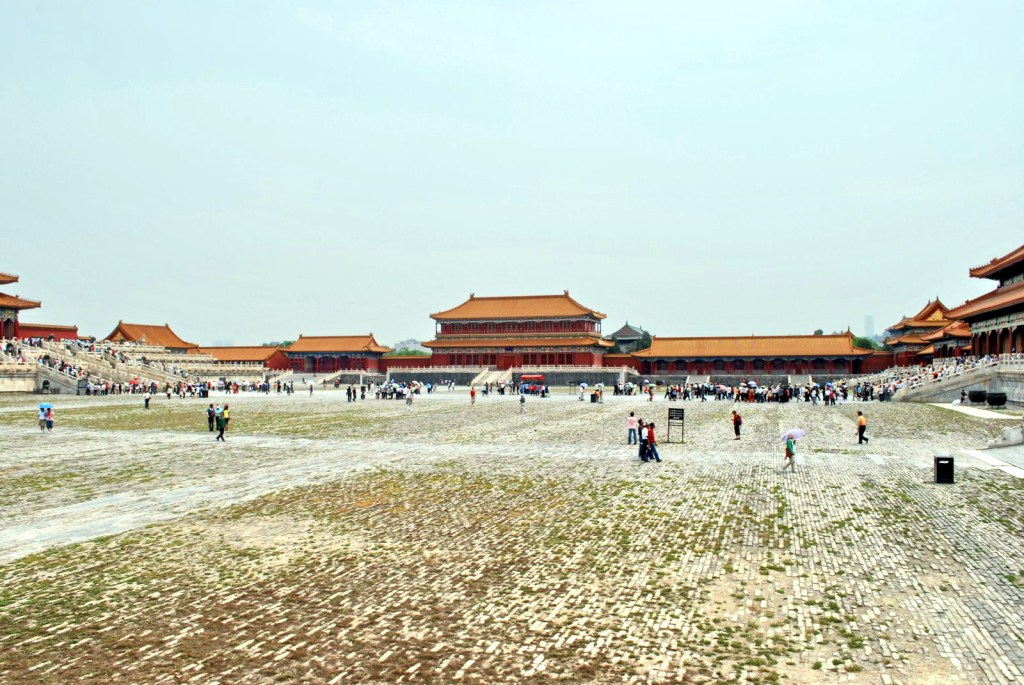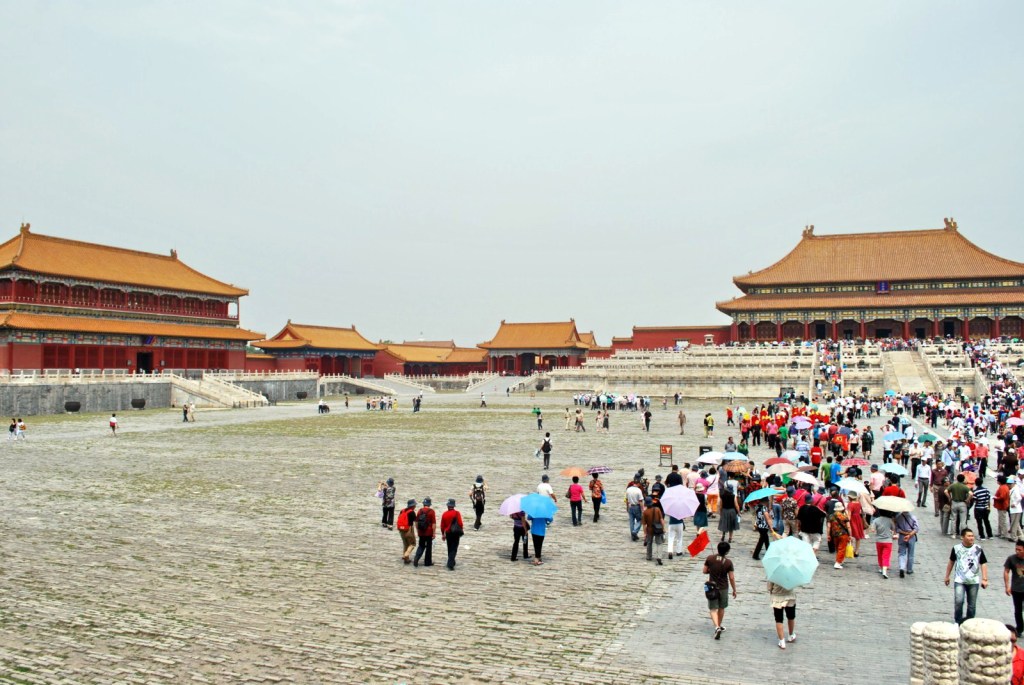After about half an hour of photo ops at Tiananmen Square, it was now time for us to enter the Forbidden City (also officially known as the Imperial Palace Museum), the best preserved imperial palace in Beijing and the largest surviving ancient palatial structure in the world. With Brittany, our guide, taking the lead, we all crossed Dongchangan St. and entered the city via Tiananmen Gate (Gate of Heavenly Peace) where most tourists enter. The gate has a huge portrait of Chairman Mao Zedong, widely used as a national symbol. Our tour of the Forbidden City would take about 2 hours.
The 72-hectare (178-acre) Forbidden City, the seat of Imperial power for 500 years, was commissioned by Emperor Yong Le, the third Emperor of the Ming Dynasty, and was built between 1406 and 1420. It was home to 24 emperors of the Ming (1368–1644) and Qing (1644–1911) Dynasties. However, it was burnt down, rebuilt, sacked and renovated countless of times, so much so that most of the splendid architecture we saw today dates from the 1700’s onwards. In 1961, the Forbidden City was listed as one of the important historical monuments under the special preservation by the Chinese central government and, in 1987, it was nominated as a World Cultural Heritage by UNESCO. This treasure house of Chinese cultural and historical relics is recognized as one of the most important 5 palaces in the world (the other 4 being the Palace of Versailles in France, Buckingham Palace in the U.K., the White House in the U.S. and the Kremlin in Russia).
The complex was so huge so it took us quite a while to walk through, especially when we wanted to have a close look at everything. Its dimensions are huge, being 961 m. (3,153 ft.) from north to south and 753 m. (2,470 ft.) from east to west and is surrounded by a 7.9-m. (26 ft.) high city wall and a 6 m. (20- ft.) deep by 52 m. (171 ft.) wide moat. The walls are 8.62 m. (28.3 ft.) wide at the base, tapering to 6.66 m. (21.9 ft.) at the top. Altogether, it has a total floor area of approximately 150,000 sq. m. (1,600,000 sq. ft.) and consists of 90 palaces and courtyards, 980 buildings and 9,999 bays of rooms, not all of which can be visited.
Traditionally, the Forbidden City is divided into two parts: the Outer Court (or Front Court) and the Inner Court (or Back Palace). The Outer Court, used for ceremonial purposes, includes the southern sections. The Inner Court, the residence of the Emperor and his family, was used for day-to-day affairs of state and includes the northern sections. Generally, the Forbidden City has 3 vertical axes with the most important buildings are situated on the central north-south axis.
Once past Tiananmen Gate, we crossed an expansive brick-paved square until we reached the 5-arched Meridian Gate (Wumen), the largest gate and the main entrance to the palace. The gate was the place where the Emperor announced the new lunar calendar on the winter solstice. Once through Meridian Gate, we go across Golden Stream Bridge and on to the Outer Court.
Forbidden City: No.4 Jingshan Front Street, Dongcheng District 65132255, Beijing, People’s Republic of China. Open 8:30 AM-5 M. Admission: RMB60





Pingback: URL